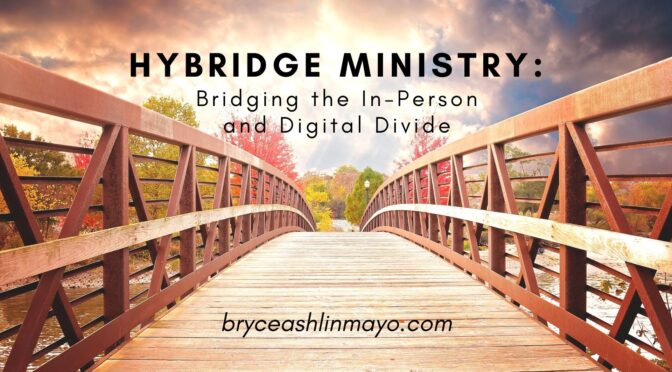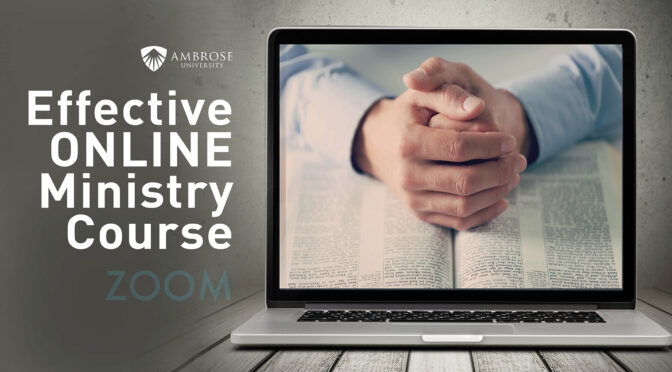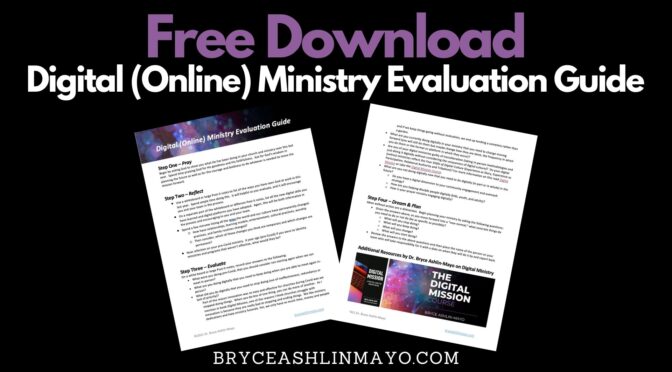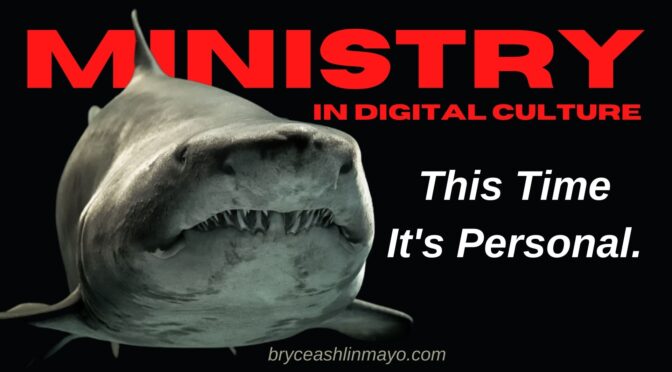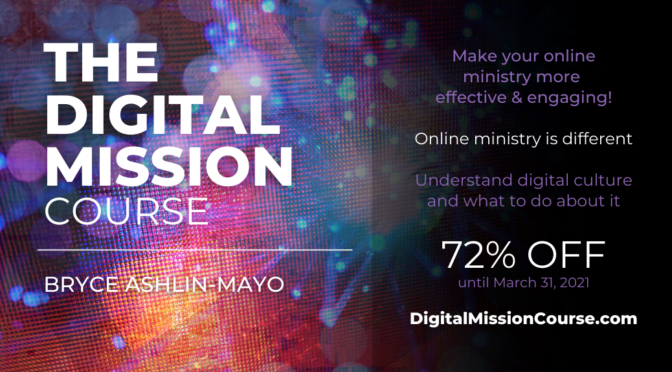Hybridge Ministry: Bridging the In-Person and Digital Divide
As your church considers the future of digital ministry in a post-pandemic world, you are probably contemplating what is referred to as a hybrid (combination of in-person and digital) model of ministry. This is often experienced through live-streaming in-person worship services or providing the ability to allow small groups or discipleship classes to have digital participants join the in-person participants through video conferencing software.
Although some churches will embrace different digital and in-person strategies and ministry methodologies, most will adopt a hybrid ministry model for a variety of reasons (most commonly, limited time and resources). To better communicate the desired outcome of this ministry model, I have started to use the term “Hybridge Ministry.” Hybridge Ministry seeks to close the digital gap and connect both groups.
Like all bridges, they are only as strong as their foundation. Thus, I want to suggest four foundational columns for effective Hybridge Ministry.
Column One: VALUE Digital
Digital ministry and the technology that allows it is still in its infancy. Social media, live-streaming, and video conference technology continue to develop rapidly, and the emergence of the Metaverse™ and other iterations of the digital domain (including the Neuralink™) will continue to evolve. One thing’s for certain, we never really go backwards with technology. Like it or not, technology always frogmarches us into the future.
Digital will have an increasing place in our collective futures. Consequently, I believe thriving churches will have a robust and reflective (understanding its potential and its perils) digital ministry strategy that embraces the way people will increasingly connect and learn. Digital is a growing means of engagement and community for people in our world.
As culture and the church comes out of the pandemic, you may be tempted to make digital the scapegoat of your post-pandemic church problems: people’s lack of engagement, decrease in giving, lack of disciple-making, etc. Although it may be convenient, these problems can’t be laid at the feet of digital ministry. The reality is that these were all very prevalent and well-documented pre-pandemic problems. The pandemic only accelerated them. Digital has its issues and challenges, but it is not necessarily the reason for all the Church’s challenges. As a result, be cautious about making it an easy scapegoat, ignoring the more significant and critical issues and problems.
As you engage in Hybridge Ministry, be very careful not to make digital second-class citizens. Recognize that some people engage online because of family challenges, social anxiety, health issues, lack of mobility, disability, etc. One of the benefits of this season is that the church has become more accessible to people. It would be unfortunate to regress, close the doors, and devalue this access as the church re-engages in person.
As a result, treat digital with dignity. Assign online hosts, call on Zoom small group participants during discussions, and welcome and acknowledge your online community, helping both communities feel valued and integrated.
In summary, Hybridge Ministry is best done when ministry occurs in the middle of the bridge. This is challenging (as we will discuss), but it is foundational to its effectiveness. Although there will be a temptation to accentuate the in-person (out of convenience or for philosophical reasons), don’t overlook the digital.
Column Two: RECOGNIZE that Digital is Different
One of the dangers of Hybridge Ministry is the assumption that in-person and digital cultures work the same way. This is not the case. Digital is not just a different platform; it is a different planet. I talk about this at length in my book, Digital Mission and the Digital Mission Course. Relationships, community, authority, communication, and how we understand the world operate differently online. This is why Hybridge Ministry is uniquely challenging if not done with sensitivity and intentionality.
Take time to consider more than what you are doing and the technology and platforms you are using. Take time to consider digital culture and how you will effectively engage your digital and in-person participants, knowing they will experience things differently. Asking “how” is challenging, but it is also vital in the success of your Hybridge Ministry.
Column Three: RESOURCE Digital
For effective Hybridge Ministry to take place, it needs resources. I am not primarily talking about technology or platforms (although necessary). Instead, Hybridge Ministry needs resources in people and attention. For example, if you are doing a Hybridge small group, class, or worship service, it is vital that you consider the digital audience as important. Staff it (paid or volunteer). Let people know that those who are online are valued and welcome. Be sure to welcome and acknowledge digital participants, making them feel like they are part of what is happening, and translate between in-person and digital cultures. The digital audience will be disenfranchised as second-class citizens if you don’t, and they will fade into the digital distance.
One effective means to evaluate the effectiveness of your Hybridge Ministry methodology is to ask how the in-person audience would feel if the meeting, service, or event were primarily online and the people in the room were only watching on a large screen. What if they were the passive audience? This would be rejected as inconceivable but consider the reverse. How does our Hybridge Ministry make the digital participants feel? Are they ignored? What would it mean to meet the two groups in the middle?
This may seem like an impossible goal, and one must choose one or the other. However, with some thoughts and tweaks on how you engage people and bridge the digital divide, you can ensure the online audience feels as engaged as the in-person congregation. Attempt to meet in the middle of the Hybridge.
Column Four: FOSTER Two-Directional Contextual Community
In the next year, there will be an influx of companies offering to outsource your digital ministry. As the church moves back to in-person gatherings, the resources allocated to digital will need to be split. This is understandable. However, digital ministry outsourcing will be ineffective. In a sea of content, what makes your digital ministry unique is your church’s proprietary stories, your pictures, your recaps, your people, your community, etc. Generic graphics outsourced to a team unplugged from your community will lead to disengagement and reduced effectiveness. Digital Ministry is like fine art; its value is in its provenance (the story connected to it). Effective digital ministry is all about contextualization and authenticity (made in your community, by your community, and for your community). Artisanal content is always better even if it means less content with less polish.
As you engage in Hybridge Ministry, move your community and content in both directions. Mix your content and cross-pollinate between digital and in-person. You probably take pictures of your in-person gatherings for social media, but what do you do to bring the digital into your in-person gatherings? Make contextual and authentic content in two directions. This will help to build community in both directions.
Hybridge Ministry
Hybridge Ministry is probably the most efficient model for most churches in this season. Yet, it is also the most complicated. It comes with a temptation to disenfranchise digital and see it as an afterthought or bonus. As you engage in Hybridge Ministry, be sure to build the bridge over the digital divide using the four columns and keep learning as you do. We will not go back when it comes to technology and so moving forward with an innovative impulse paired with a constantly evaluative lens is vital for the church to be faithful into the future.

